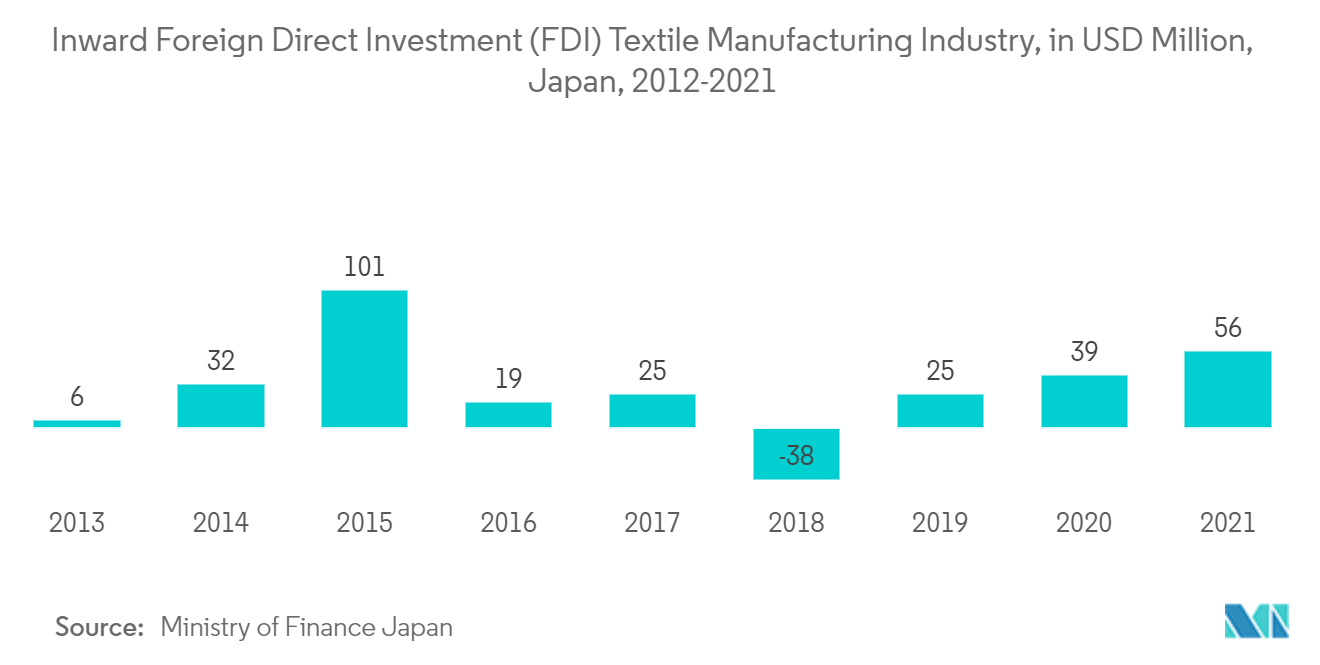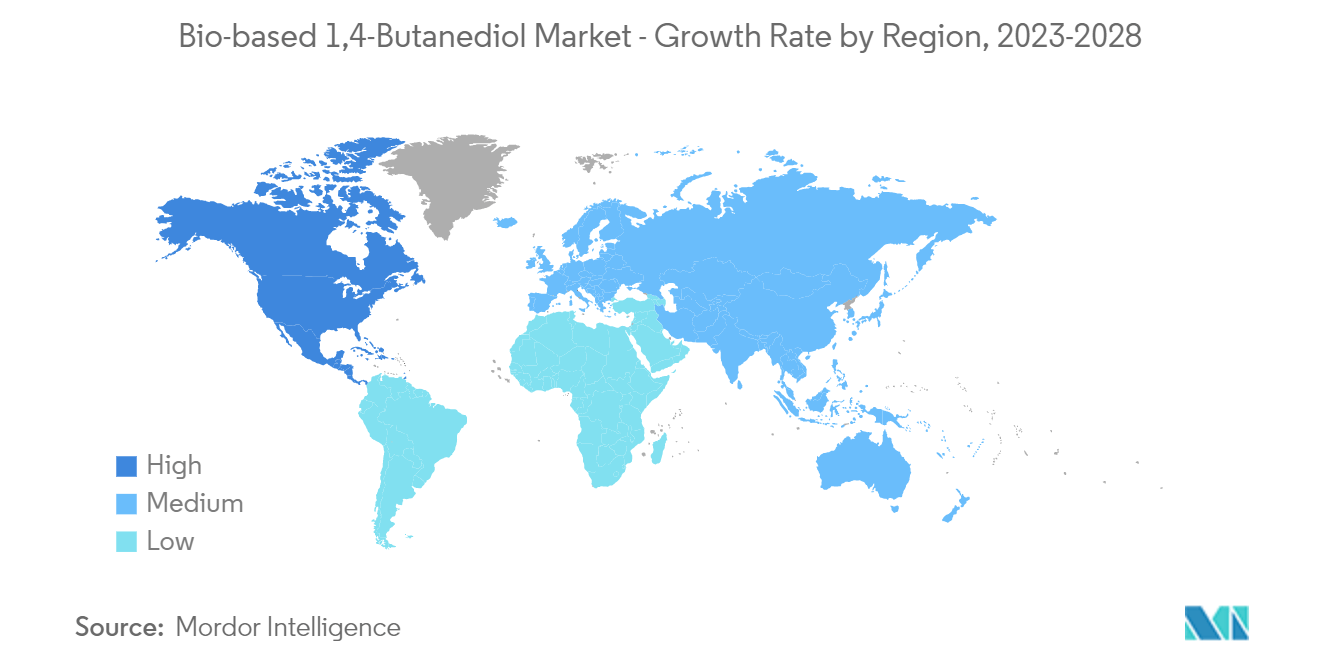Market Trends of Bio-based 1,4-Butanediol Industry
This section covers the major market trends shaping the Bio-based 1,4-Butanediol Market according to our research experts:
Increasing Demand in the Textile Market
- 1,4 BDO is used as an adhesive in leather, plastics, polyester laminates, and polyurethane footwear. 1,4-butanediol is an immediate chemical used in thermoplastic polyurethane (TPU) production, further used in making synthetic leather sole material.
- However, 1-4 BDO produces tetrahydrofuran (THF), used to make spandex fiber captured in the garment industry. Spandex is a lightweight, soft, smooth synthetic fiber with a unique elasticity. Due to its elastic property, it is used in making stretchable clothing.
- Spandex fibers, consisting of 80% polytetramethyleneether glycol (PTMEG or PolyTHF), can be stretched to between 500% and 700% of their original length and durably retain their shape.
- The growth rates for spandex fiber are estimated to be around 10%, much higher than those for textiles. The trend toward comfortable clothing with high wearing comfort is driving demand in this area.
- In September 2022, Lycra Company announced the world's first large-scale commercial manufacturing of bio-derived spandex using QIRA bio-based 1,4-BDO as one of its key ingredients. The company collaborated with Qore to manufacture next-generation bio-derived LYCRA. This manufacturing involves 70% of the LYCRA fiber content sourced from renewable feedstock, helping to reduce the carbon footprint of LYCRA fiber by nearly 44%. The first renewable LYCRA fiber made using QIRA bio-based 1,4-BDO will be produced at the LYCRA Company's production facility in Tuas, Singapore, by 2024. The LYCRA Company is seeking commitments with various brands and retail customers ready to pursue bio-derived solutions for their apparel.
- Moreover, according to the Ministry of Finance Japan, the inward foreign direct investment (FDI) in the Japanese textile manufacturing industry accounted for USD 56 million in 2021, compared to USD 39 million in 2020.
- Such factors depict that the market will observe stagnant growth from the textile industry during the forecast period.

Europe is Expected to Dominate the Market
- The European region dominated the global market share. The demand in the market studied is driven by the growing demand from industries such as automotive, electronics, and consumer appliances.
- Germany includes the most significant electronic and automobile industry in Europe. The German electrical and electronics market is Europe's largest and the 5th largest worldwide.
- According to the ZVEI, Germany's electro and digital industry turnover accounted for EUR 200.4 billion (USD 218.19 billion) in 2021, witnessing a growth rate of 10.2% compared to EUR 181.9 billion (USD 198.05 billion) in 2020. Furthermore, the production from the electro and digital industry accounted for EUR 162.9 billion (USD 177.36 billion) in 2021, registering a growth rate of 8.8% compared to EUR 149.6 billion (USD 162.88 billion) in 2020. Such trends in the industry have enhanced the demand for bio-based 1,4 butanediol for electronics and semiconductor applications in the country.
- Also, Germany leads the European automotive market, with 41 assembly and engine production plants contributing to one-third of Europe's total automobile production. In the overall 2021, the country produced 3,096,165 vehicles which declined by 12% compared to 3,742,454 cars in the same period in 2020. The declining automotive industry is likely to affect the market studied. However, the automotive industry is estimated to recover and grow later in the forecast period.
- The United Kingdom is the largest European market for high-end consumer electronics products, with about 18,000 UK-based electronics companies. The demand for technologically-advanced electronic devices registered significant growth in the consumer electronics market in the country. This increase in demand is expected to drive electronics production in the country, leading to the need for bio-based 1,4-Butanediol for electronic applications.
- The France automobile industry fared much better when compared to other major economies in Europe in the past few years. In overall 2021, the country produced about 917,907 units of vehicles, which increased by 3% in comparison to 2020.
- Besides, with the increasing population income, consumer appliance demand, such as air-conditioners, fridges, washing machines, microwaves, etc., noticeably increased, further driving the consumer appliances market growth.
- Hence, all such favourable market trends are expected to drive the demand for bio-based 1,4-butanediol for raw material applications in the region during the forecast period.

